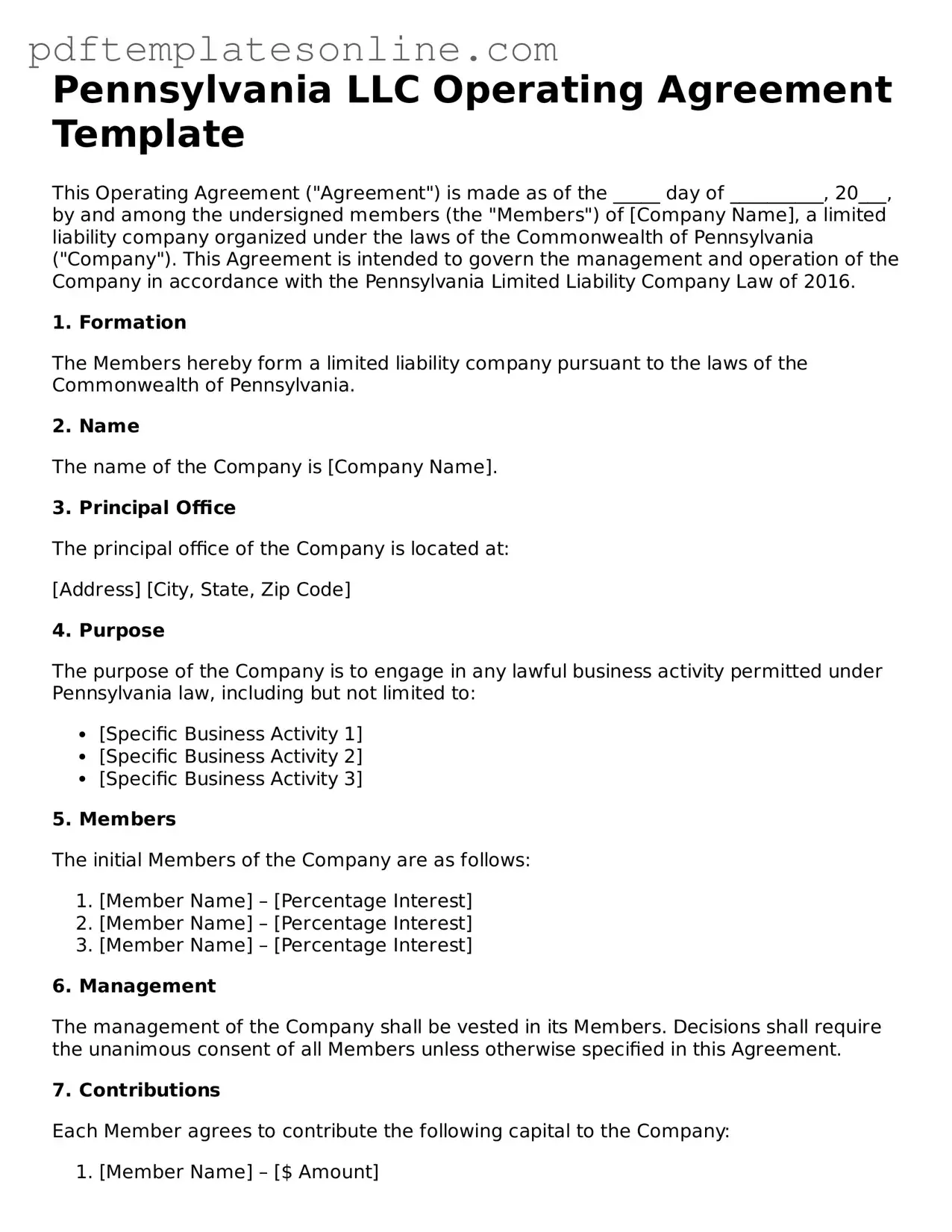When individuals or groups form a business in Pennsylvania, an Operating Agreement is a crucial document that outlines the management structure and operational guidelines. However, many people make mistakes when filling out this form, which can lead to misunderstandings or disputes down the line. Here are five common errors to avoid.
One of the most frequent mistakes is failing to clearly define roles and responsibilities. It’s essential to specify who will manage the business and what each member's duties entail. Without this clarity, members may have different expectations, leading to conflicts. Clearly outlining roles helps ensure everyone is on the same page from the start.
Another common error is not including a detailed capital contribution section. Members should specify how much each person is investing in the business and the form of that investment, whether cash, property, or services. Omitting this information can create disputes about ownership percentages and profit sharing later on.
People often overlook the importance of establishing a process for decision-making. The Operating Agreement should outline how decisions will be made, including voting rights and procedures. Without this framework, members may struggle to reach consensus, leading to frustration and inefficiency.
Many individuals also forget to include provisions for handling disputes. It’s wise to plan for disagreements in advance. By including a clear dispute resolution process, such as mediation or arbitration, the Operating Agreement can help prevent conflicts from escalating and ensure a smoother resolution.
Finally, neglecting to update the Operating Agreement as the business evolves is a significant oversight. Changes in membership, business structure, or goals may necessitate revisions. Regularly reviewing and updating the agreement ensures it remains relevant and effective in guiding the business.
